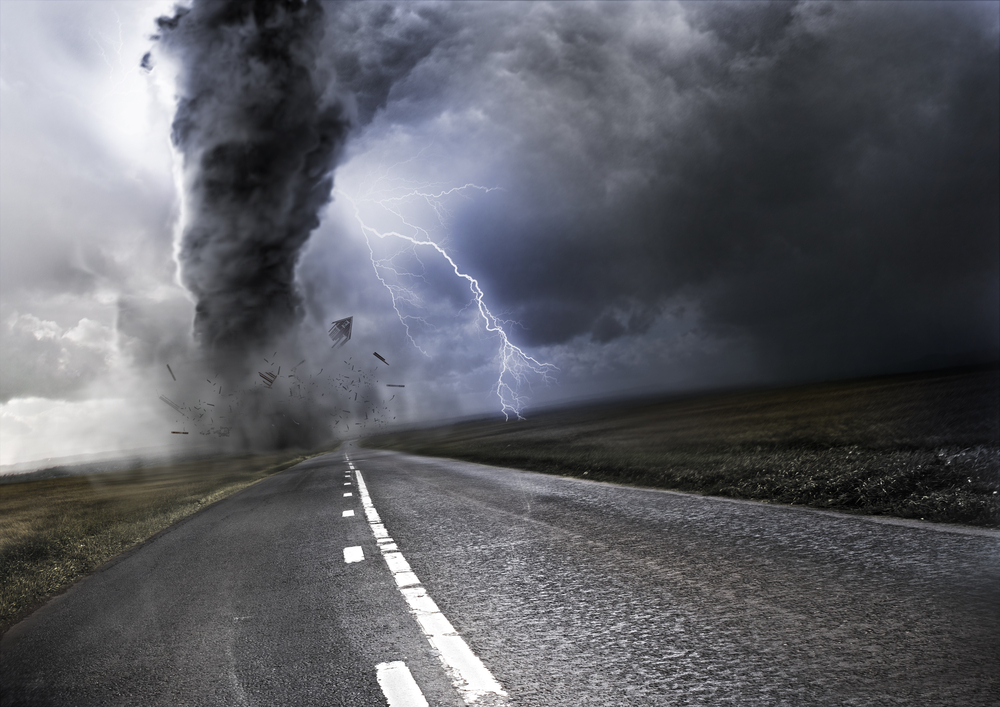
In a world of unpredictable natural disasters, staying informed and prepared is important. From hurricanes to earthquakes, these forces of nature can devastate entire communities in seconds. The science and technology behind these disasters is complex and ever-changing. Knowing the basics can help you understand how to prepare for them when they inevitably strike.
It’s easy to feel helpless in the face of these powerful forces, but knowledge is power. By understanding the science behind natural disasters, you can better equip yourself and your community with the resources needed to protect yourselves during a crisis. From evacuation plans to emergency supplies, there are many steps that can be taken to ensure safety in times of danger.
This article will delve into the science and technology behind natural disasters and provide tips on how best to prepare for them. With this knowledge, you’ll have the tools necessary to protect yourself and your loved ones when disaster strikes. Though an unknowable future lies ahead, being informed and prepared can help minimize the risk of danger in times of uncertainty.
1. Different Types Of Natural Disasters
Nature can be unpredictable, and its fury can take many forms. Natural disasters are some of the most devastating events that can occur, and they come in multiple varieties. Earthquakes, floods, hurricanes, tornadoes, wildfires – these are just a few of the potential calamities that can enormously impact our lives and well-being.
When it comes to preparing for natural disasters, understanding their causes is a vital first step. Earthquakes are caused by the collision of tectonic plates beneath the earth’s surface; flooding is triggered by heavy rainfall or melting snow; hurricanes form when warm ocean waters interact with certain atmospheric conditions; tornadoes occur when winds rapidly spin in a vertical direction; and wildfires often result from human activities like burning debris or leaving campfires unattended.
Knowing how to protect yourself from each type of natural disaster is key to staying safe. It’s important to stay informed about current weather forecasts and warnings, create an emergency plan for your family and home, assemble an emergency kit with essential supplies such as food, water, and medical supplies, secure your property ahead of time with storm shutters or other protective measures, learn where local shelters are located in case you need to evacuate your home quickly – all these steps will help make sure you’re prepared if disaster strikes.
2. The Science Behind Natural Disasters
Nature can be unpredictable and devastating. Natural disasters occur all over the world, wreaking havoc on communities, and destroying homes and lives. But what’s the science behind these disasters? Let’s take a look.
From hurricanes to earthquakes and floods, natural disasters are caused by a variety of different elements. The most common culprits are often extreme weather or geological activity like tectonic plates shifting beneath the surface of the earth. These events can cause catastrophic damage in an instant.
When it comes to preparing for natural disasters, knowledge is key. Educating yourself about the science behind these events can help you understand how to protect yourself and your family best if one occurs. By knowing what signs to look for, you can create an emergency plan to ensure everyone remains safe during a disaster.
3. Emerging Technologies For Disaster Monitoring
Today, science and technology are playing an increasingly important role in monitoring natural disasters. With the advances of modern science, researchers have developed tools that can accurately predict and detect a multitude of disasters. Emergent technologies for disaster monitoring allow us to manage these events.
One such technology is the use of remote sensing. Remote sensing provides up-to-date information about potential threats from storms and other disasters in greater detail than ever. It enables us to identify better areas at risk from flooding or landslides, which can help with evacuation strategies. This technology also allows us to monitor global warming trends and their impact on our environment.
Other technologies used for disaster monitoring include ground-based radar systems and global positioning systems (GPS). Radar systems provide detailed information about weather patterns, allowing for more accurate forecasts of storms, floods, and so on. GPS systems provide precise locations of at-risk areas as well as tracking data on people in affected regions. Emergency responders can use this information to access those in need of assistance during a disaster quickly.
In many ways, these emerging technologies are helping us to understand natural disasters better and prepare accordingly. By combining traditional methods with modern science and technology, we can minimize the damages caused by natural disasters while protecting lives and property.
4. Early Warning Systems For Natural Disasters
Turning to the next part of the discussion, I’ll be looking at early warning systems for natural disasters. These are technologies that have been developed to help people prepare for natural catastrophes like floods, earthquakes and hurricanes. They can provide valuable information about when a disaster is likely to strike, where it’s likely to hit and how intense it’s going to be.
Early warning systems rely on sophisticated sensors and software to monitor weather patterns, geological activity and other factors that could signal an impending disaster. They often use satellites, buoys, drones and other cutting-edge technology for monitoring purposes. This data is then analysed by experts who can predict the likelihood of a disaster occurring in a certain area.
The information gathered by these early warning systems can be incredibly useful in helping people prepare for natural disasters. It can enable authorities to issue warnings so that people in affected areas can take action before it’s too late. The data can also be used to update evacuation plans and inform emergency services so they are better prepared to deal with any potential crises.
5. Creating Disaster Resilient Infrastructure
It’s all too evident that natural disasters can wreak havoc on our lives, leaving us vulnerable and exposed. And while early warning systems are a great way to prepare for such tragedies, creating disaster-resilient infrastructure is equally important in preventing the damage caused by these events.
This involves reinforcing existing structures, such as buildings and utility poles, with stronger materials like steel or concrete. Additionally, designing new constructions with an eye toward disaster-resistance can help reduce the risk of injury or loss of life during natural disasters.
The science and technology behind this form of preparation is still in its infancy. But as the world continues to face more frequent and intense natural disasters, it’s clear that disaster-resistant infrastructure could be a powerful tool in keeping our communities safe. It’s time to start investing in solutions that will help us better prepare for the future – no matter what Mother Nature throws at us!
6. Disaster Prevention Strategies
It’s important to consider disaster prevention strategies to be prepared for potential disasters. Such strategies are essential in understanding the science and tech behind natural disasters and how to prepare for them.
One key strategy is to develop an early warning system. This can alert people when a disaster is imminent, providing time to take necessary precautions and make evacuation plans if necessary. This could be anything from a text message or phone call sent out when a hurricane or tornado is on its way, or a siren placed in certain areas that can detect rising water levels due to flooding.
In addition, community-level preventive strategies should be implemented. These strategies may include building dykes and dams, planting trees to protect against extreme winds, strengthening buildings with earthquake-resistant designs, and educating communities about the dangers of natural disasters and what steps they can take if one should occur. All of these efforts help create a more resilient infrastructure that can better withstand the impacts of natural disasters.
This knowledge will help protect people from harm and provide peace of mind in knowing that steps have been taken to mitigate future damage from such events. It’s all part of taking proactive measures before it’s too late.
7. Building An Emergency Kit
Let’s face it, disasters are inevitable. No matter how hard we try, some natural disasters can occur without warning. So what can we do to be prepared? The answer is simple: build an emergency kit.
Having a well-stocked emergency kit is a must when preparing for a disaster. This kit should include items such as non-perishable food, water, blankets and first aid supplies. It’s also important to have a few days’ worth of cash on hand in case of power outages or other disruptions in services. Other items that may come in handy during an emergency include flashlights, batteries and a radio.
The key to building a successful emergency kit is planning ahead. Make sure to have enough supplies for everyone in the household and store them somewhere easily accessible in case you need them quickly. Additionally, it’s important to check the contents of your emergency kit regularly and restock any items that may have expired or been used up. By having an emergency kit handy, you’ll be better prepared for whatever disaster comes your way.
8. Developing An Emergency Plan
When it comes to preparing for natural disasters, having an emergency plan is key. One must consider how to effectively assess the risk of an impending disaster and devise a plan to protect one’s family and property. This can include researching evacuation routes, drafting a family communication plan, and ensuring everyone knows where to go should disaster strikes.
It’s also important to consider what supplies would be needed in the event of an emergency. A well-stocked emergency kit with enough food, water, medical supplies and other essentials is essential. All of this should be stored in a safe place such as a basement or garage that is easily accessible in the event of an emergency.
Having an emergency plan in place can help give people peace of mind when it comes to facing natural disasters. Knowing what steps need to be taken and having the right supplies on hand can make all the difference when it comes down to it. Taking the time now to prepare for future catastrophes could save lives later on down the line.
9. How To Stay Informed During A Natural Disaster
Staying informed during a natural disaster is crucial. It’s not just about knowing what’s going on, but also having access to the resources you need to act. To be safe in an emergency, you gotta stay informed.
The best way of staying informed is by keeping track of official sources like news outlets and government websites, so you can get updates on the situation quickly and accurately. Social media can be great for getting information out quickly, but it’s important to verify the accuracy of any info you come across before acting on it. You should also sign up for emergency alerts from local authorities so you can know when dangerous situations arise and how to respond.
Having a plan for communicating with family members who may be in different locations or unable to reach you during a disaster is also helpful. Make sure everyone has each other’s contact info and that they know how you’ll communicate in case phone lines are down or cell reception is spotty. That way, everyone can get urgent updates and send check-ins if necessary.
Staying informed during a natural disaster takes some preparation, but it’s essential for staying safe and making sure your loved ones do the same.
10. How To Access Emergency Services During A Natural Disaster
We’ve discussed the science and technology behind natural disasters, but knowing what to do during one is just as important. Knowing how to access emergency services in a disaster is crucial.
The first thing you should do is contact your local emergency services such as the police or fire department, depending on the type of disaster. You can also call a local radio station or TV station for information about available resources and any warnings that have been issued. Ensure you have all necessary contact numbers stored on your phone in an emergency.
Additionally, you can use social media networks like Twitter and Facebook to stay updated on any news or announcements from official sources such as government agencies and civil defense organizations. This can help you keep track of the latest developments related to the disaster and be aware of any new safety measures or alerts that have been issued.
It’s essential to keep yourself informed during a natural disaster so that you can take appropriate action if needed. Knowing how to access emergency services is key in staying safe in these situations.
Conclusion
The world is dangerous, and natural disasters are part of the risk. It is our responsibility to understand the science and technology behind these disasters so that we can prepare for them. We can better protect ourselves and our communities by building resilient infrastructure, creating emergency kits and plans, and staying informed during a disaster.
It is important to remember that even with all of the advances in science and technology, natural disasters are still unpredictable. We must remain vigilant in our preparation efforts so that we can protect ourselves and those around us when they strike.
We must be ready to confront the risks associated with natural disasters head on. Doing so requires us to familiarize ourselves with the science behind these disasters and the technologies available to monitor them and warn us of impending danger. With this knowledge, we can ensure that we are prepared for whatever comes our way.










